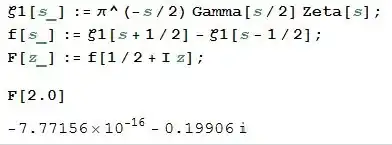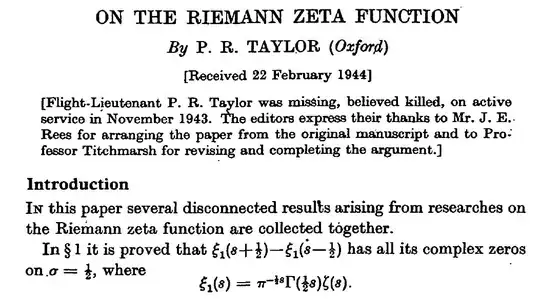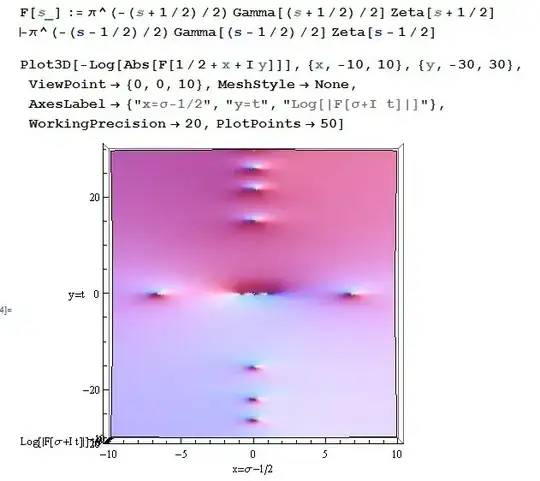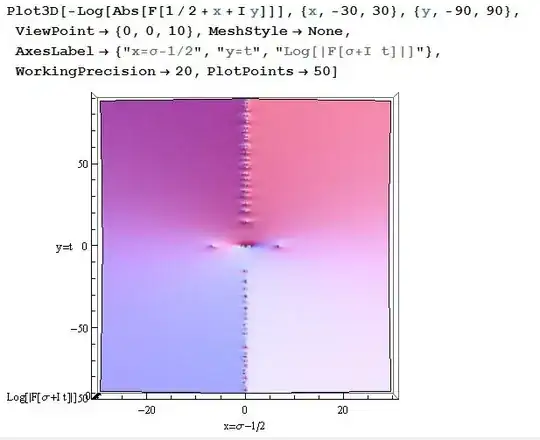The paper simply says that all the non-real zeros of $F(s)$ lie on the line $\sigma = 1/2.$ The latest images posted by OP seem to show just that. There are non-real zeros at $\sigma = 1/2$ and two zeros located symmetrically about that line at $t = 0.$ These last have imaginary component $t = 0$ so the assertion of the theorem doesn't address them.
I went back and looked at this again, not to beat a dead horse but because I am interested in the sort of trompe l'oeil that occurred here.
The reasoning behind the question about the paper's claim was:
Let σ+it=s=1/2+iz=1/2+ix−y. Here σ, t, x, y ∈ R. Thus σ = 1/2 − y, t = x. All zeros of f(s) lie on σ = 1/2 are equivalent to all zeros of f(s) lie on y = 0. Thus all zeros of F(z) = F(x+iy) are real. –
It's an inviting idea and seems to simplify things but it mis-states the claim of the paper, which is that "all complex zeros of F(s)...lie on the line $\sigma = 1/2.$"
This took a while to see because one automatically focuses on the particulars of the transformation: is the claim of equivalence correct? Well, it is. The transformation gives a valid new picture of the same information but then we misinterpret the appearance of complex zeros.
The transformation takes the original points (x,y) of $G(s)$ and assigns new coordinates $(\hat{x},\hat{y}):$
$\hat{x} = y;$
$\hat{y}=1/2 - x;$
So when two complex zeros are found in the new system at $(0,\pm 6.82)$ these
correspond to points in the original system at about $(7.32,0),(6.52,0)$ as a quick check of the graph confirms. The sequence of complex zeros on the line $x = 1/2$ in the original system are mapped to a sequence of real zeros $(x_i,0)$ in the new system.
The images posted by @mike confirm this.







$$z = 62.5105378688927205436579804976 i$$
– Alexander Vlasev Nov 21 '14 at 19:51